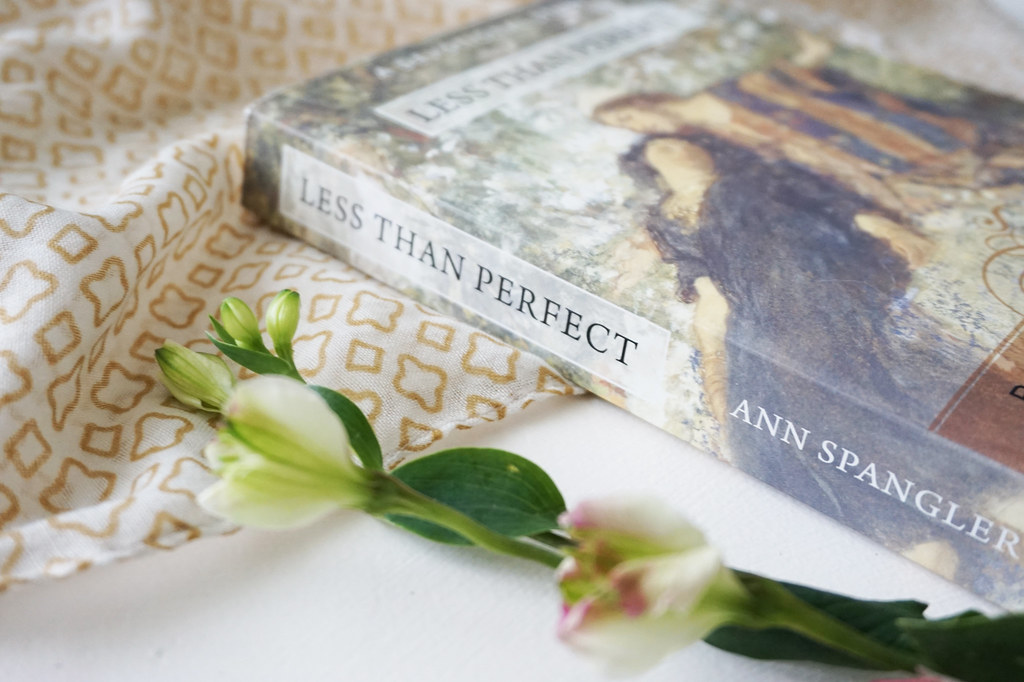Ann Spangler’s first “real job,” was working in the editorial department of a Christian publisher. She was thrilled because it was a book—actually a series of books called The Narnia Chronicles by C.S. Lewis–that first attracted her to Christ when she was a skeptical undergraduate. Reading Lewis’ books, made her aware of how important the right book at the right time can be in a person’s life. As a writer, she considers it a stunning privilege to help people engage with the greatest of all books—the Bible—in order to know God better. It’s a grace to welcome Ann to the farm’s front porch today…
Like many people, I’ve always been curious about my ethnic identity.
Whenever I asked where our family originated, my dad would chuckle and say, “You’re English, Irish, Scottish, French, German and a little Fox Terrier.”
That was his way of assuring me I was a garden variety, American mutt.
When the results of my recent DNA test arrived, there were a few surprises. Though I was disappointed to find no trace of Fox Terrier, it seemed I had some Scandinavian, Jewish, and even North African roots.
I began to wonder what it would be like to travel back in time in order to meet the people who populated my family tree.











Though the technology for that doesn’t exist, there’s another aspect of my heritage—and yours too—that can be explored in some detail.
It’s our spiritual ancestry.
Reading some of the Bible’s great stories offers us the opportunity not only to learn about God but to explore our Spiritual DNA.
Jewish children tend to think about characters like Sarah and Abraham and Jacob, Rachel, and Leah, not as strangers from the distant past, but as elderly aunts and uncles, the first shoots on their family tree.
Because of what Christ has done, we’ve been grafted into that tree, which means that these people are related to us as well.
Though it’s great to expose children to these stories, the Bible is essentially a book for adults. When you move beyond one-dimensional, Sunday-School portraits of these characters, you begin to see surprising insights, particularly as you explore the historical and cultural context in which they lived.
The result is new life and energy in your Bible reading.
Consider the colorful character Gomer, the wife of a long-suffering prophet by the name of Hosea.
Here’s a recap of her story.
She stands outside in the cool, refreshing rain, allowing it to run in rivulets across her cheeks and down her lips.
She is like the lily of the valley that spreads its fragrance across the fields or like the lush, abundant grapes that make men glad. Fertility and fruitfulness, celebration and wild abandon—these are the forces that rise and surge within her.
Young, beautiful, and bold, she is always smiling, flashing her big, dark eyes, attracting inevitable attention. Though she is determined to squeeze every ounce of sweetness from life, that’s not all she wants. More than anything, she is looking for someone she can adore.
Suddenly she notices a man hurrying toward her. It is not desire that propels him but pain and hurt. She knows this because she is good at reading people and because it is her husband who draws near. “Gomer,” he says, “come home!”
And so she does, but reluctantly. Hosea is a good man, but goodness can be tiresome.
He talks only of God and of faithfulness to the covenant, dampening her high spirits and making her feel ashamed of her sins. But how can it be wrong to dream of having just a little pleasure in this life?
Hosea is distressed by all he sees. The people offer sacrifices at pagan shrines, praising Baal for every harvest. They have forgotten the faith their fathers professed.
But she thinks it matters little how people name their gods—whether Baal or Yahweh or Asherah—as long as they acknowledge god by paying homage for the rain and the harvest, the bread and the wine.
If Yahweh is so upset, why has the rain been so abundant, the crops so lush, and the peace so prolonged? If everyone is worshiping the wrong god, why have so many people been blessed with so much?
But Hosea insists on pointing out the twistedness in everything—the gap between rich and poor, all the deception and lies, the sleeping around, the killings, and the worship of countless idols.
He says God’s people have become no different than the surrounding peoples.
Instead of whispering his disapproval, he shouts it, as though he is God’s chosen mouthpiece, telling everyone—especially the priests—that they are harlots and whores and that God will surely punish them.
She finds it infuriating and embarrassing to be known as the wife of the prophet Hosea, and her eyes begin to cast about for someone she can truly love.
If Gomer would stop for just one moment and try to read her husband’s heart, she would discover that she has broken it more than once.
Perhaps she already knows this. But she doesn’t know—not yet—how hard it was for Hosea to marry her when he did.
She has no inkling that Yahweh, the God of his ancestors and hers, had instructed him, saying, “Go, marry a promiscuous wife and have children with her, like an adulterous wife this land is guilty of unfaithfulness to the Lord.”
Nor does she realize that her marriage has become a public parable—a story God is telling to His people.
I confess I would rather compare myself to people like Ruth or David in his best years or Elizabeth, the mother of John the Baptist, than to Gomer.
But she, too, is part of my spiritual family tree, a woman whose story speaks to me about the foolishness of living life apart from God as well as about the deep, long-suffering, passionate love of a God who is always trying to bring His people back to Himself.
According to the laws of the day, Hosea would have been within his rights to have had Gomer executed because of her unfaithfulness.
Instead of punishing her or turning his back on her, he looks for her, rescues her from slavery, and welcomes her back into his arms when she is finally ready to come home.
This amazing story of a prophet who married a promiscuous wife displays the deep, self-sacrificing love of a God who calls us back from all the places we have wandered so that we can finally come home to Him.
Ann Spangler is an award-winning writer and the author of many bestselling books, including Praying the Names of God and Sitting at the Feet of Rabbi Jesus (with Lois Tverberg).
In Less Than Perfect: Broken Men and Women of the Bible and What We Can Learn from Them, Ann explores the stories of 38 colorful characters, showing that God is always extending His grace and advancing His plan, through and even despite less than perfect people—the only kind of people there are.
Designed for individual reading as well as small group study, Less Than Perfect may be the perfect companion for those who want to reinvigorate their reading of the Bible by deepening their understanding of God’s Word.
Entertaining, informative, and inspirational, Less Than Perfect gives you a big picture view of the Bible even as it takes you into the hearts and minds of people with struggles just like yours. As you learn more about the individuals who are part of your spiritual family tree, you’ll discover why God loves to use imperfect people to tell His perfect story of redemption.
[ Our humble thanks to Zondervan for their partnership in today’s devotion ]







